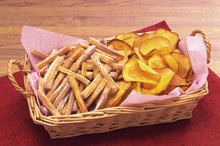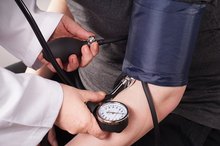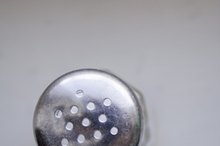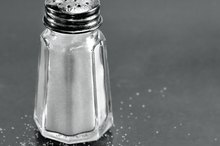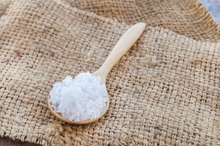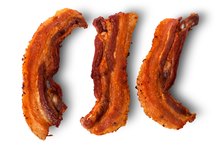What does fact checked mean?
At Healthfully, we strive to deliver objective content that is accurate and up-to-date. Our team periodically reviews articles in order to ensure content quality. The sources cited below consist of evidence from peer-reviewed journals, prominent medical organizations, academic associations, and government data.
- U.S. Food and Drug Association: Lowering Salt in Your Diet
- American Dietetic Association: Less Salt. More Flavor
The information contained on this site is for informational purposes only, and should not be used as a substitute for the advice of a professional health care provider. Please check with the appropriate physician regarding health questions and concerns. Although we strive to deliver accurate and up-to-date information, no guarantee to that effect is made.
How Many Milligrams of Sodium Should I Have in One Day?
Many American consume well over the recommended daily amount of sodium, or salt, according to the American Dietetic Association. Over time, this can cause high blood pressure that leads to kidney disease, heart disease and stroke. It is important to understand how many milligrams of salt you should consume each day and how you can manage your sodium intake.
Amount
The recommended amount of sodium that you should consume in a day depends on your age. Children ages 2 to 3 need 1,000 mg of sodium a day. That amount increases to 1,200 mg a day from ages 4 to 8 and 1,500 mg from 9 to 18. Adults need 2,300 mg of sodium a day, which is equal to about a teaspoon of salt.
- The recommended amount of sodium that you should consume in a day depends on your age.
- Children ages 2 to 3 need 1,000 mg of sodium a day.
Considerations
Can Eating Salt Prevent Weight Loss?
Learn More
Your doctor might suggest that you consume less than the recommended amount of sodium if you have certain health risks. If you have hypertension or kidney problems, you might want to consume no more than 1,500 mg of sodium a day. Your doctor also might suggest that you reduce your sodium intake if you are middle age or older.
Managing Intake
According to the U.S. Food and Drug Administration, 10 percent of the salt you consume is naturally found in foods 1. Five percent to 10 percent consists of table salt, and around 75 percent comes from processed foods or dishes prepared in restaurants. You can help reduce your sodium intake by using spices and herbs like cilantro, rosemary and dill to season your food. Read food labels carefully to make sure that you are choosing low-sodium products. If you are planning to eat at a restaurant, balance the rest of the day by consuming low-sodium foods.
- According to the U.S. Food and Drug Administration, 10 percent of the salt you consume is naturally found in foods 1.
- Five percent to 10 percent consists of table salt, and around 75 percent comes from processed foods or dishes prepared in restaurants.
Recommendations
How to Lower Sodium Levels in the Blood Naturally
Learn More
If it is difficult for you to suddenly cut back on the salt in your diet, try reducing your intake gradually. Increase the amount of potassium-rich foods that you eat, such as fruits from vines and leafy green vegetables, because potassium can help reduce the effects that sodium has on your blood pressure.
Related Articles
References
- U.S. Food and Drug Association: Lowering Salt in Your Diet
- ChooseMyPlate.gov: Food Groups
- American Heart Association. Sources of Sodium.
- Centers for Disease Control and Prevention. Top 10 Sources of Sodium. 2017.
- Institute of Medicine. Dietary Reference Intakes Tables and Application. National Academies of Sciences, Engineering, and Medicine, Health and Medicine Division. 2015.
- United States Department of Agriculture. Dietary Guidelines for Americans 2015–2020. United States Department of Health and Human Services. 2015.
Writer Bio
Rose Welton is a journalism major and a freelance writer. Her education is focused on nutrition and early childhood studies, making her an expert when it comes to writing about health and children's growth and development. She has written numerous articles and blog posts on various topics for online publications and has also worked on an Internet news team.
